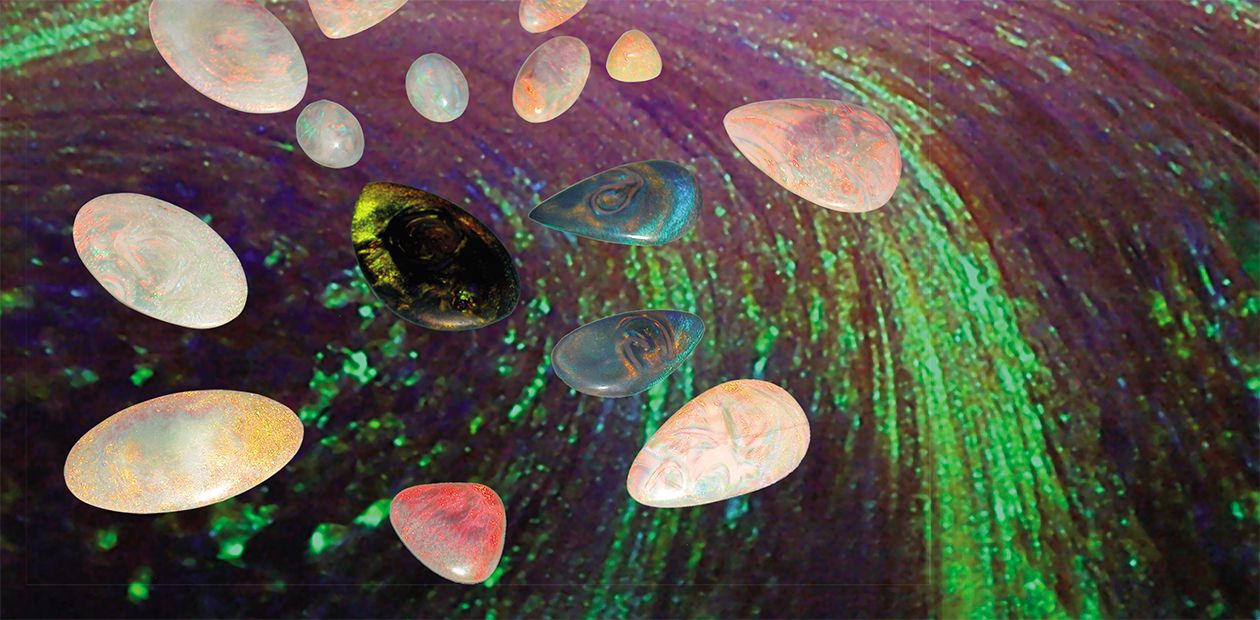From Precious Opals to Nanofilms
At the end of 2006, the scientific meeting “Science and Nanotechnologies” was held in Akademgorodok (Novosibirsk). At this session, a lot of world-level works performed by scientists of the Siberian Branch of the Russian Academy of Sciences were presented. These achievements are encouraging, especially if we take into account modest funding of our researchers. The “technology of success” of this meeting was revealed to us by its participants: Doctor of Geology and Mineralogy D. V. Kalinin, Candidate of Geology and Mineralogy V. V. Serdobintseva (Institute of Geology and Mineralogy SB RAS), and Doctor of Physics and Mathematics A. I. Plekhanov (Institute of Automatics and Electrometry SB RAS). Their talk was devoted to new nanomaterials based on artificial opals whose quality and potential applications are much better than those of the existing materials.
Everything has a beginning. Today’s success goes back to 1976, when investigations on the synthesis of noble opal, a beautiful precious stone with an iridescent hue, were started by the Laboratory of Hydrothermal Synthesis of Silicates at our Institute of Geology, Geophysics, and Mineralogy. Similar studies were initiated by the French-Swiss Laboratory headed by P. Gilson, well-known for its achievements in the synthesis of precious stones. In subsequent years, these two organizations were competing with approximately the same results.
Hand-made stones
As it turned out, the synthesis of precious opals is not an easy task; it is much more complicated than the synthesis any other precious stones. Nevertheless, by the beginning of the 1980s our laboratory managed to develop a technology for the industrial synthesis of these stones and implement it at the Isfar Hydrometallurgical Plant. At that time, a stone that could be absolutely identical to the natural one had not been produced yet. However, jewel plants enthusiastically started using our opals to produce goods whose quality was highly appreciated.
P. Gilson and his colleagues obtained practically the same results. However, since they had a lot of technological difficulties and were not satisfied with what they achieved, they decided to stop. Their work was continued by the large Japanese ceramic company Kyocera, which could not obtain a complete analog of the natural stone either. Now this company produces very beautiful stones called Gilson’s opals.
In the mid-1990s, we succeeded in producing a noble opal whose physical and chemical parameters did not differ from those of the natural stone. In those days, Russian science was in a difficult situation: the laboratory grew smaller and turned into a small research group. In our works on synthesizing natural opals and studying natural specimens, we learned a lot of new about the processes of formation of this mineral. At that time, foreign specialists thought that the regular structure of opal consisting of spherical particles of amorphous silica of the same sizes was the result of spontaneous deposition and mechanical arrangement of particles in the form of a crystalline lattice.
In reality, however, the crystal-like structure of opal is due to the interaction and subsequent nanocrystallization of negatively charged particles of silica surrounded in a liquid medium by a diffuse cloud of positively charged ions. The interaction between them is caused by the following forces: molecular attraction of masses, electrostatic repulsion of ion “atmospheres”, polarization and gravitational forces. The role of deposition is reduced mainly to the creation of a certain concentration of particles necessary for the nanocrystallization process.
The process of origination of opal nanocrystals has been thoroughly studied jointly with our colleagues from the Institute of Catalysis of SB RAS. In this process, silica particles are initially separated from each other by liquid layers whose thickness is approximately equal to two ion atmospheres. The scientific results obtained were used to synthesize not only high-quality noble opals, but also three-dimensional photonic opal crystals and, eventually, photonic opal films with high characteristics.
Photonic crystals: light instead of electricity
It should be noted that since early 1990s physicists considered opal to be a classical example of the photonic crystal, whose interaction with the light beam can be generally compared with the operation of a semiconductor element. Like semiconductor crystals, photonic crystals have the so-called forbidden (stop) zone for a certain wavelength of light. This opens up new possibilities for the creation of photonic-crystalline devices for various purposes and various electronic-photonic combinations.
To use light instead of electricity is a fascinating task. And since modern electronics is at the limit of its capabilities, world’s largest scientific centers are actively pursuing investigations in this field.
Our subsequent works on the creation of photonic-crystalline materials were carried out in close cooperation with the Institute of Automatics and Electrometry of SB RAS. It was not easy to grow opal films with minimal defects. However, using the concept of equilibrium nanocrystallization, we managed to produce opal films with a reflection coefficient in the stop zone of up to 96 % .
The field of application of opals themselves, silica nanoparticles, and opal films is beyond the scope of photonics. They can form a basis for bio- and chemosensor materials and be special catalysts of biochemical reactions. Therefore, we are planning a joint project with the Institute of Chemical Biology and Fundamental Medicine of SB RAS.
This is how noble opal — wonderful and unique work of nature — used for many centuries for decorations, has found itself in the focus of the most advanced technologies. And the future of this marvelous stone will depend on how fruitful and coordinated will be the work of the “integration” team consisting of specialists of SB RAS in a wide variety of fields.











